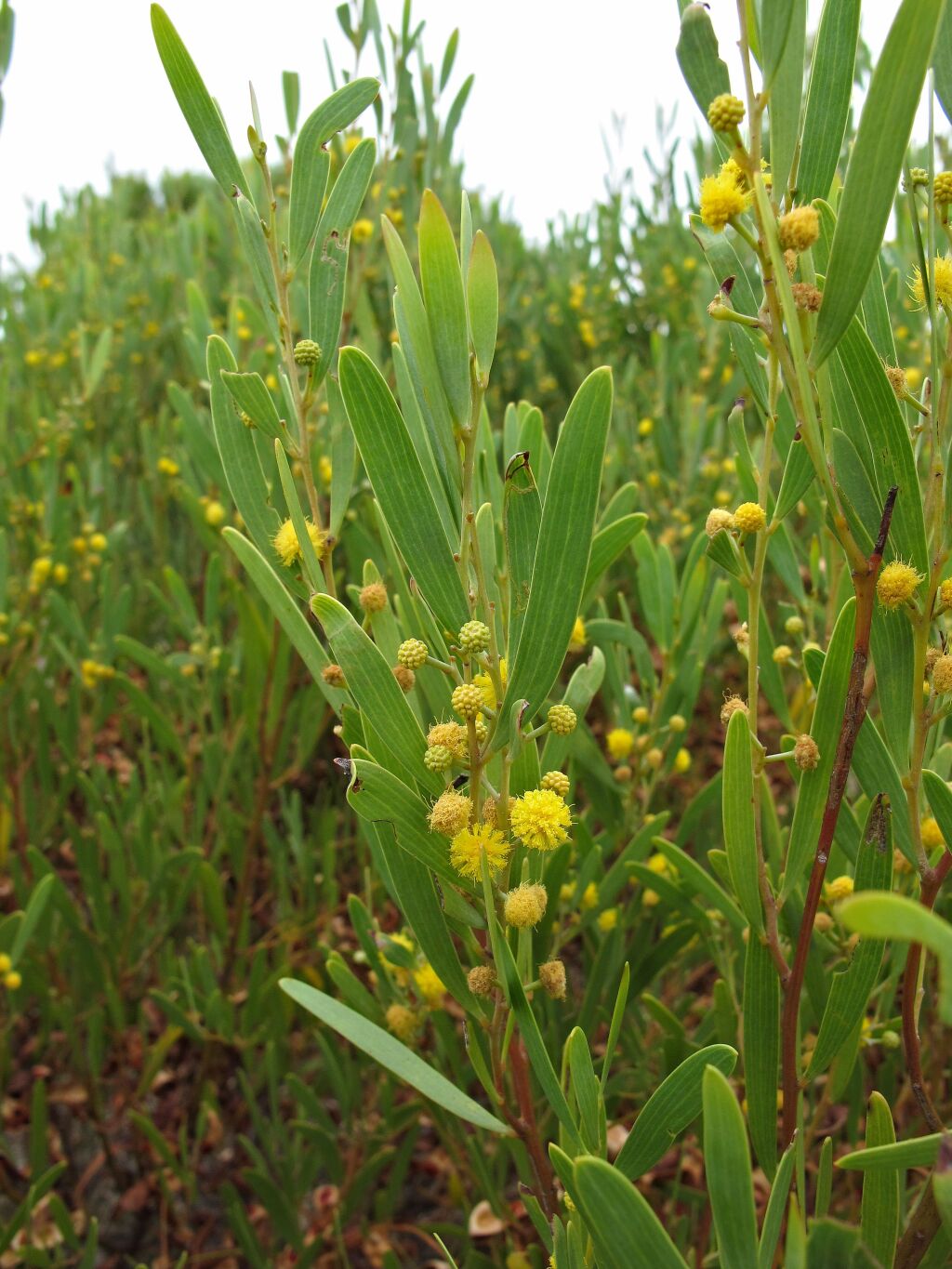Acacia cyclops
A.Cunn. ex G.DonDense, bushy shrub or small tree, 1–6 m high; branches spreading from near the base often obscuring the stem; branchlets slightly angular or subterete, glabrous. Phyllodes ascending, narrowly oblong to elliptic or obovate, 4–9.5 cm, long, 6–15 mm wide, straight to curved, coriaceous, glabrous, obtuse or acute, apiculate; main veins 3–4, distant, with numerous secondary veins occasionally anatomosing. Racemes usually 2-headed, rachis 3–20 mm long; peduncles 4–12 mm long, glabrous or minutely pubescent; heads globular, 5–7 mm diam., c. 60–75-flowered, golden. Flowers 5-merous; sepals half to three-quarters united. Pods linear, to 15 cm long, 7–15 mm wide, thick-coriaceous, straight before dehiscence, becoming twisted and persisting after seed-fall, glabrous; seeds longitudinal, elliptic, 5–7 mm long, glossy, dark brown to black; funicle fleshy, orange to scarlet, twice encircling seeds. Flowers Dec.–Mar.
Wim, VVP, GipP, OtP, WaP, HSF. Native to coastal regions of Western Australia and South Australia, often grown elsewhere as a wind-break or for dune stabilisation in coastal areas. Populations of this species have naturalised in a few coastal and sandy inland sites, mainly in southern and western Victoria.
 Spinning
Spinning


